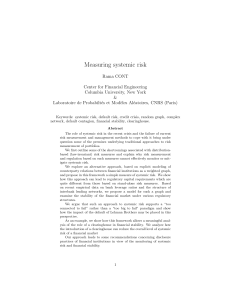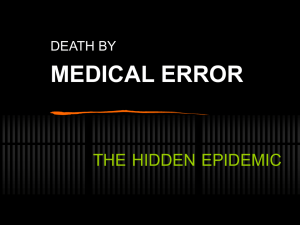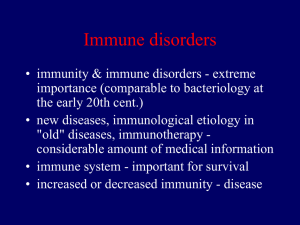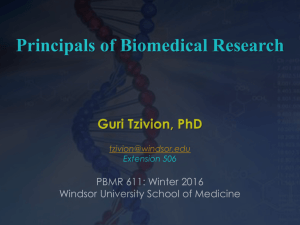MULTIPLESYSTEMS - Patho-DPT
advertisement
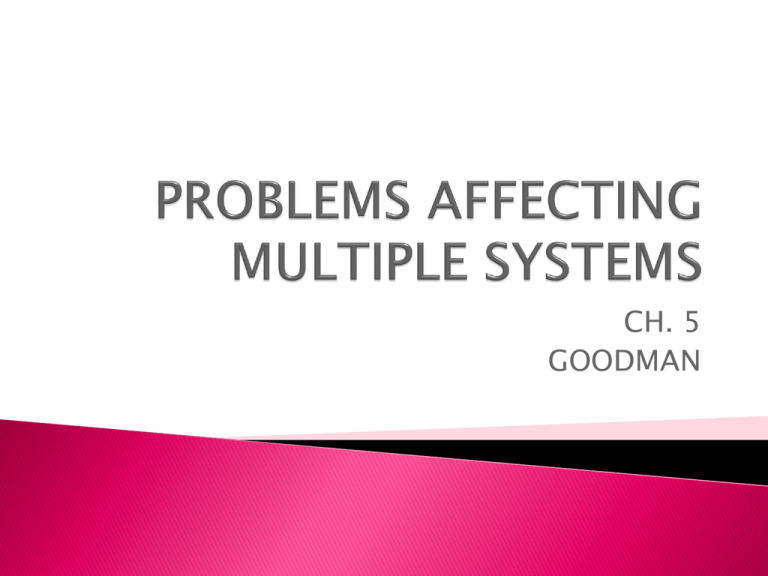
CH. 5 GOODMAN “Many conditions and diseases seen in the rehabilitation setting can affect multiple organs or systems.” Goodman CH.5 1. Systemic effects of acute inflammation initial response of tissue to injury involves vascular and cellular responses Local signs> redness, warmth, swelling, pain, loss of function Systemic effects> fever, tachycardia, hypermetabolic state Characteristic changes in blood>>elevated serum protein levels (C-reactive protein, coagulation factors) + increased WBCs (leukocytosis) 2. Systemic effects of chronic inflammation Result of persistent injury, repeated episodes of acute inflammation, infection, cellmediated immune responses and foreign body reactions Tissue response to injury> accumulation of lymphocytes, plasma cells and macrophages (mononuclear inflammatory cells) and production of fibrous connective tissue (fibrosis) Chronic inflammation (continued) Fibroblasts, small blood vessels and collagen fibers > constitute fibrosis Fibrous tissue is light gray with a dense, firm texture that causes contraction of normal tissue This may cause progressive tissue damage and loss of function Chronic inflammation (continued) Systemic effects> low grade fever, malaise, weight loss, anemia, fatigue, leukocytosis, lymphocytosis Inflammation is reflected by increased erythrocyte sedimentation rate (ESR) 3. Systemic factors influencing healing (Box 6-4) Physiologic variables (age, vascular sufficiency) General health of the individual; immunocompetency; psychological/emotional/spiritual well-being Presence of comorbidities (examples) ◦ ◦ ◦ ◦ ◦ ◦ ◦ ◦ Diabetes mellitus Decreased O2 perfusion (CHF,COPD,CAD) Hematologic disorders Cancer Incontinence Alzheimer’s disease Neurologic impairment Immobility Systemic factors influencing healing (continued) Tobacco, alcohol, caffeine, other substance use/abuse Nutrition Local or systemic infection; presence of foreign bodies Type of tissue Medical treatment (prednisone, chemotherapy, radiation therapy) 4. Consequences of immunodeficiency Immunodeficiency predisposes the affected individual to infections ; there is a failure of one or more of the functions of the immune system Therapists are most likely to encounter those with acquired immunodeficiency and those with non-specific causes such as: ◦ Those that occur with viral (and other) infections ◦ Malnutrition ◦ Alcoholism Immunodeficiency (continued) Non-specific causes: ◦ ◦ ◦ ◦ ◦ ◦ Aging Autoimmune conditions Diabetes mellitus Cancer- myeloma, lymphoma, leukemia Chronic diseases Cancer treatment- chemotherapy and radiation 5. Systemic effects of neoplasm Due to the destructive nature and spread of malignancy, there can be local and systemic effects Local> necrosis, ulceration, compression, obstruction, hemorrhage **pain is more likely if cancer invades near nerves/ nerve cells **secondary infections often occur and can lead to death Systemic effects of neoplasm (continued) Systemic> weight loss, muscle weakness, anorexia, anemia, coagulation disorders, cachexia Increase in the number of aging population…..medical advances…….increase in physical therapy scope of practice>>> Physical therapists must be ready and able to assess patients/clients with multisystem problems!! Even in critically-ill patients, interventions such as mobilization, positioning, exercise and pulmonary hygiene are indicated in order to maximize O2 transport Physical therapists at work….. Ambulating a patient on a vent…… Physical therapists need to be able to provide careful and close monitoring of cardiopulmonary status of patient/client Hematological monitoring is necessary Knowledge of lab values is critical Need to have advanced knowledge of the “whole picture” Physical therapists at work….. In the Intensive Care Unit Monitoring……. Mobilizing……. Comforting a patient… Bringing a smile to a face……. Recovering from open heart surgery….. Recovering from an illness…. Andrea C. Mendes PT, DPT Good luck on the final!


